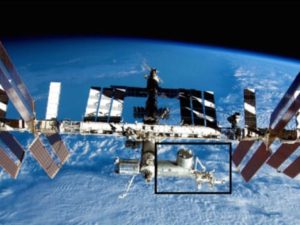The Group on Earth Observations, GEO, (a partnership of governments and interna- tional organizations) developed the Global Agricultural Monitoring (GEOGLAM) initiative in response to the growing calls for improved agricultural information. The goal of GEOGLAM is to strengthen the international community’s capacity to produce and disseminate relevant, timely and accurate forecasts of agricultural production at national, regional and global scales through the use of current Earth Observations (EO), which include satellite and ground-based observations.
Recent developments in both satellite and information technology provide a significant opportunity to enhance current operational agricultural monitoring systems. This initiative is designed to build on existing agricultural monitoring programs and strengthen them through international networking, operationally focused research and development and data/method sharing.
A number of activities (two of which are described here) have been developed under the GEOGLAM initiative, within the GEOGLAM’s framework of three core thematic components and three cross-cutting components.Thethreecorecomponentsare the monitoring of global crop production, building national capacity around the world for crop monitoring, and the development of early warning systems for countries at risk.
The three cross-cutting activities include:
i. the coordination of satellite data for monitoring, executed in close collaboration with the Committee on Earth Observation Satellites (CEOS);
ii. operational research and development of best practices and methodologies across diverse agricultural landscapes (carried out through the Joint Experiment on Crop Assessment and Monitoring (JECAM) and the Stimulating Innovation for the Global Monitoring of Agriculture (SIGMA) Initiative); and
iii. the dissemination of data and information about regional-to-global scale croplands and crop condition.
THE GEOGLAM CROP MONITOR: OPERATIONAL REPORTING ON GLOBAL CROP CONDITIONS
GEOGLAM and AMIS (Agricultural Market Information System) were endorsed by the G20 Agricultural Minister’s Declaration (Cannes, November, 2011) as part of their Action Plan on Food Price Volatility and Agriculture. GEOGLAM was tasked to “coordinate satellite monitoring observation systems in different regions of the world in order to enhance crop production projections and weather forecasting data.” In response, GEOGLAM developed the Crop Monitor system, which provides monthly reporting using Earth observations (EO), global crop condition assessments and reports, in support of the AMIS market monitoring activities. The first report from the Crop Monitor appeared in the September 2013 issue of the AMIS Market Monitor and enhancements are being made based on feedback from AMIS.
The objective of the GEOGLAM Crop Monitor is to provide an international and transparent multi-source,consensus assessment of crop growing conditions, crop status, and agro-climatic conditions likely to impact global production. This activity covers the four primary crop types – wheat, maize, rice, and
soy – within the main agricultural producing regions of the AMIS countries. These assessments are produced operationally and published in the AMIS Market Monitor Bulletin. The Crop Monitor reports provide cartographic and written summaries of crop conditions as of the 28th of each month, according to crop type. See Figure 1.

FIGURE 1.
The output of the GEOGLAM Crop Monitor to the AMIS Market Monitor is a combination of one synthesis map, highlighting the crops that are other than favorable, and four pie charts representing a country’s share of total AMIS production in a 5-year average per crop. Source: http://glam.umd. edu/content/ geoglam-crop- monitor
The Crop Monitor initiative brings together international experts from national, regional, and global monitoring systems, agriculture organizations, universities, and members of industry who share and discuss information from a variety of independent yet complementary sources, enabling them to reach a consensus on global crop conditions. Information types used by GEOGLAM in its production of the Crop Monitor include EO data and products, agro-meteorological data, crop model output, and field reports. Representatives from over 30 different agencies and organizations are currently participating in the assessments and that number is continuing to grow. The assessments are coordinated and managed by the Center for Global Agricultural Monitoring Research in the Department of Geographical Sciences at the University of Maryland (UMD) with regional coordination of the rice assessment by the Asia-RiCE (Rice Crop Estimation and Monitoring) team along with the AFSIS (ASEAN+3 Food Security Information System project) using the Japanese Space Agency’s (JAXA) outlook system (JASMIN).
In order to facilitate the monthly crop assessments, an online Crop Assessment Portal was developed by UMD. The interface includes a publicly available visualization interface that enables comparison between relevant datasets (national, regional, and global) according to crop type and accounting for crop calendars. The main data layers used in the interface include global Normalized Difference Vegetation Index (NDVI) anomalies (UMD/NASA), Global Rainfall Anomalies (European Commission Joint Research Centre (EC JRC)) and NOAA Earth System Research Laboratory (ESRL), Global Temperature Anomalies (EC JRC), crop type maps of major growing regions (International Food Policy Research Institute (IFPRI)/International Institute for Applied Systems Analysis (IIASA) Spatial Production Allocation Model (SPAM) 2005 [beta version; released 2013]), United States Department of Agriculture (USDA) National Agricultural Statistics Service (NASS) 2013 Cropland Data Layer, 2013 Agriculture and AgriFood Canada (AAFC) Annual Crop Inventory Map, Global Agriculture Monitoring (GLAM)/UMD, Advancing Methods for Global Crop Area Estimation (GLAD)/UMD (See Figure 2), Australian Land Use and Management Classification (Version 7), Mexico’s Agricultural and Fisheries Information Service (SIAP), Agricultural Research Council of South Africa (ARC), the EU JRC Monitoring Agricultural Resources (MARS), and crop calendars (based on GEOGLAM partner crop calendars and the Food and Agriculture Organization of the United Nations (FAO) and United States Department of Agriculture (USDA) crop calendars).

FIGURE 2.
The combined use of currently available, high quality observations from coarse, moderate and fine resolution satellite systems allow for multi-scale temporal and spatial sampling of global croplands. This image is a 24-km x 20-km zoom centered on 95 35 24W, 44 19 38N in southwest Minnesota during August, which is the peak of the growing season. The light green color is soybean and the dark green color is corn. On the left column is a 30-m Landsat image and on the right column is a 5-m RapidEye image. The lower rows are zoomed in images of the top row, with the zoom footprint shown over the Landsat image.
The crop type masks and crop calendars serve as base layers that provide vital, spatially explicit
information on the general growth stage for major growing regions for each of the AMIS crops. This information enables crop-specific interpretation of the remote sensing-based crop condition indicators and provides context for the crop analysts’ assessments. As part of the Crop Monitor activity, new datasets that reflect the ‘best available’ crop type masks and crop calendars are being developed through the compilation of high quality national products developed by the GEOGLAM partners. These will also capture information in cases where multiple crops are grown in the same year (e.g. 1st and 2nd corn crops). These crop type masks and crop calendar products are planned for release in 2015 alongside other next-generation global products being developed in the context of GEOGLAM Crop Monitor.
The GEOGLAM Crop Monitor has generated much international interest, including being highlighted in a feature article in the FAO Food Outlook in April 2014 and receiving the Esri Special Achievement in GIS Award at the Esri User Conference in July 2014.
EARTH OBSERVATIONS FOR AGRICULTURAL MONITORING: SPACE-BASED DATA ACQUISITIONS AND ACCESS THROUGH CEOS
Agriculture is a highly dynamic process both in space and in time, and as such, effective monitoring requires data that are both frequent as well as sufficiently fine spatial resolution in order to detect the significant changes in crop condition that can happen very quickly and at fine levels. Despite the history of space-based remote sensing of the Earth’s surface having its roots in agricultural monitoring, the adoption of satellite data for the operational monitoring of croplands has been heterogeneous throughout the world. This is partly because data acquisitions have been inconsistent geographically and temporally, with some areas and time periods more frequently and regularly imaged than others, leaving crucial information gaps. Additionally, space-based data can be very costly, and in some cases may be inaccessible to certain users, due to licensing issues or computational or internet speed limitations.
A crucial step in the improvement of global agricultural monitoring is the coordination of space- based Earth observations (EO), which will ensure the acquisition of and access to EO over global croplands. This activity is being carried out in the context of GEOGLAM through close collaboration with the Committee on Earth Observation Satellites (CEOS), a consortium of space agencies tasked with the
harmonization of satellite imaging assets for societal benefit.
In 2012, the CEOS Ad Hoc Working Group of GEOGLAM – comprised of GEOGLAM scientists and space agency representatives – was established to:
a. define the data requirements for agricultural monitoring at multiple levels and scales;
b. evaluate how the workload of satellite data acquisitions for agricultural monitoring could be shared between multiple missions and multiple space agencies; and
c. confront challenges in access to satellite data.
As of early 2015, two data acquisition strategies have been developed by the CEOS Ad Hoc Working Group, which identify where, when, and how frequently different classes of remotely sensed data should be acquired to provide timely information on a variety of agricultural variables, including crop condition, type, area, calendar, and yield, among others. Both of these strategies have been endorsed by the CEOS Plenary (November 2013 and October 2014), and are resulting in the acquisitions of data in the context of GEOGLAM. These data are being used in operational research as well as in the development of baseline datasets by the JECAM (Joint Experiment of Crop Assessment and Monitoring), SIGMA, and Asia-RiCE projects, as well as by agricultural monitoring experts around the world.
Additionally, analyses have been conducted to see whether and where currently available missions – individually or together, in an imaging constellation – can meet requirements (see Figure 3). Initial results show that some areas and time periods are insufficiently covered, providing further evidence that operational agricultural monitoring requires a multi-mission constellation approach.

FIGURE 3.
Here are the combined revisit capabilities of a few proposed constellations, comprised of missions which fall under the purview of CEOS. These individual missions are independently capable of revisits between 5-16 days. However, together, they are capable of much more frequent revisits, which is very valuable for agricultural monitoring. The missions referenced here are: L8 = NASA/USGS Landsat 7 ETM+; L7 = NASA/USGS Landsat 8 OLI/TIRS; R2 = Indian Space Research Organization (ISRO) ResourceSat-2 AWiFS; S2A = European Space Agency Sentinel-2a MSI; S2B = ESA Sentinel-2b MSI. (Source: Whitcraft, Becker-Reshef, Killough, and Justice et al., in press).
Similarly, to meet the challenge presented by slow internet connections and low-powered computer processors coupled with very high data volumes, the Ad Hoc Working Group is in the process of prototyping a variety of data dissemination systems. In addition to facilitating access to satellite EO from a variety of space agencies and missions, data services systems are being evaluated for utility in remote, cloud-based processing so as to decrease the need for local download of data and to maximize the timeliness of data analyses and information generation.
GEOGLAM continues to make the case for space-based monitoring of agriculture, identifying the utility of this method through its Crop Monitor and the value it adds to policymakers everywhere.



